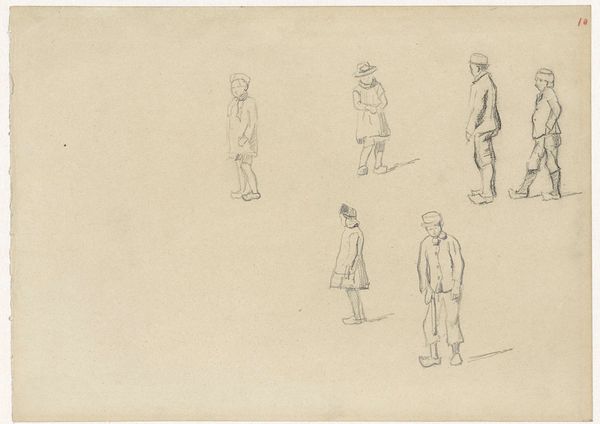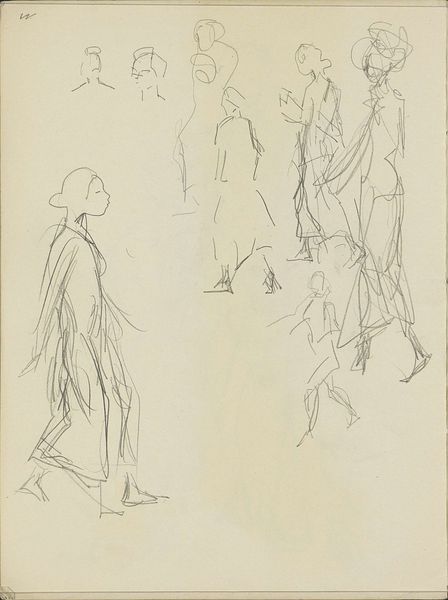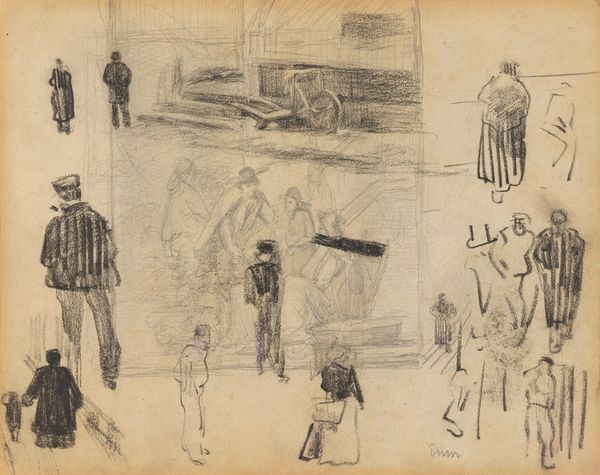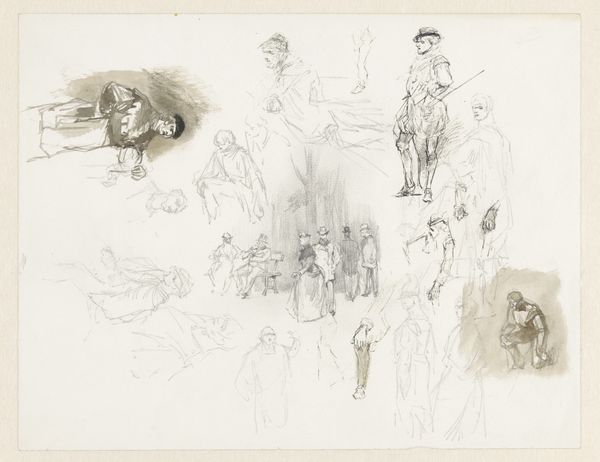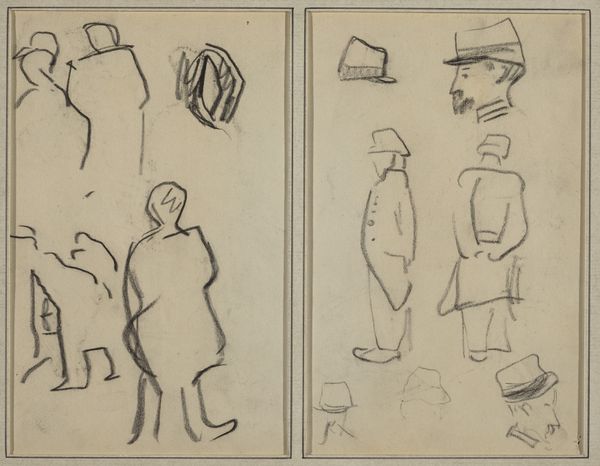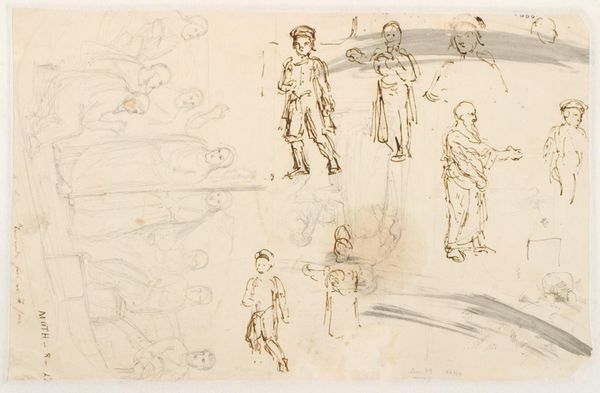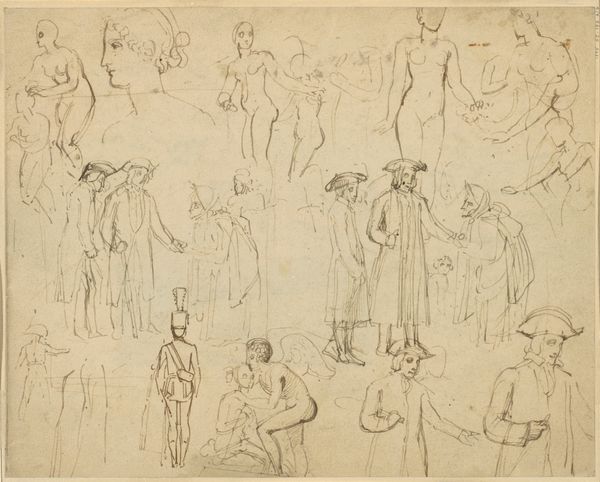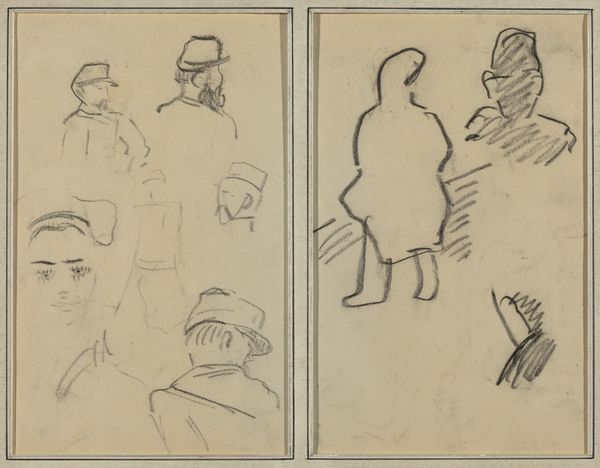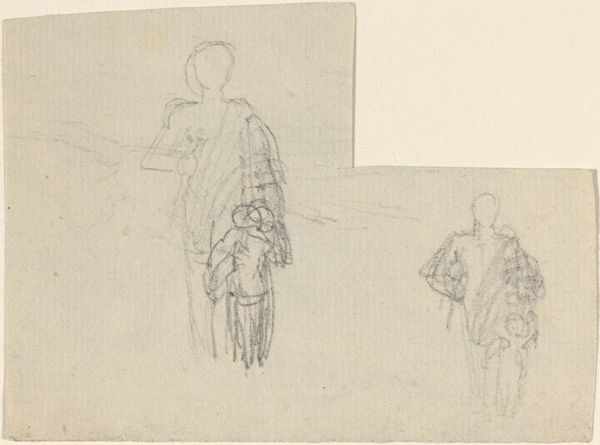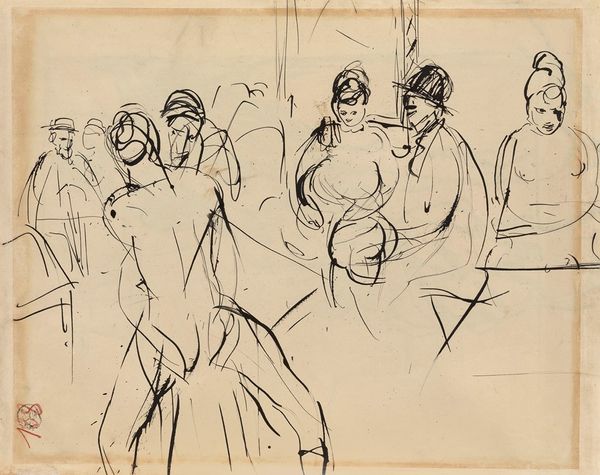
drawing, pencil
#
portrait
#
drawing
#
impressionism
#
figuration
#
pencil
Copyright: Public Domain: Artvee
Editor: This drawing is called "Hands, Silhouettes" by James Ensor. It's a pencil drawing that reminds me of quick sketches of people, maybe captured on a busy street. It feels a bit raw and unfinished. How do you interpret this work? Curator: This piece, like much of Ensor's work, speaks to the alienated individual within modern society. Note the ghostly quality of the figures, almost transparent. Consider the social and political climate he was working in – late 19th and early 20th century Belgium, a time of great social upheaval and anxieties about industrialization. The silhouettes suggest a loss of individuality, becoming mere shadows within the larger social structure. Editor: So, the anonymity is deliberate? Curator: Precisely. Ensor was deeply critical of bourgeois society, seeing it as conformist and suffocating. Are these figures individuals, or merely placeholders representing societal expectations? Think about how dress plays a role in this perceived erasure. Do you feel like he might be advocating for greater social awareness through the piece? Editor: It's interesting to consider their facelessness in terms of social critique. The lack of distinguishing features really emphasizes the feeling of being lost in a crowd. Curator: Exactly. And consider the hand sketches mixed in with the figures; hands, that should represent labour, creativity, or human touch. Here, they're disconnected and floating, maybe a symbol of alienated labor? These kinds of questions make the work relevant even today, right? Editor: Absolutely. I’d never have considered all those social factors without your perspective. Thanks! Curator: And thank you. It’s by connecting art to the social realities we live with that we keep these discussions alive.
Comments
No comments
Be the first to comment and join the conversation on the ultimate creative platform.
